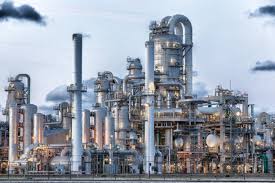
Imo State, Nigeria – June 2025
The long-anticipated Assa North–Ohaji South (ANOH) Gas Processing Plant, located in Ohaji/Egbema Local Government Area of Imo State, has officially commenced full commercial production, marking a significant milestone in Nigeria’s push toward energy independence and clean fuel transition.
Developed through a joint venture between Seplat Energy and the Nigerian National Petroleum Company Limited (NNPC), the ANOH Gas Plant is currently the largest gas processing facility in Nigeria, with a projected output of 850 million standard cubic feet of gas per day (MMSCFD). This exceeds its initial design capacity of 300 MMSCFD, making it a critical player in supporting Nigeria’s energy security and gas commercialization strategy–something with the potential to shift Nigeria’s energy story. After years of talk, planning, and behind-the-scenes hustle, the Assa North–Ohaji South (ANOH) Gas Plant has finally roared into production. And make no mistake, this isn’t just another infrastructure project. It’s the largest gas plant of its kind in Nigeria, and it’s changing the game.
This isn’t just a big deal for Imo State. It’s a national moment. ANOH is designed to process up to 300 million standard cubic feet of gas per day—enough to fire up industries, generate electricity, and deliver cooking gas to millions. But what’s even more impressive? Just weeks into full operations, it’s already flowing more than 850 million standard cubic feet daily. That’s not just “up and running.” That’s leading the charge.
But how did we get here?
Let’s rewind a bit.
The story of ANOH started decades ago when geologists discovered huge reserves of gas sitting beneath the soil of Ohaji/Egbema. For years, those reserves were just numbers in a report—untouched, unharvested, uncelebrated. But then came a new wave of ambition. A joint venture was formed between Seplat Energy and the Nigerian National Petroleum Company Limited (NNPC). The goal was clear: unlock the potential of Imo’s underground wealth and make it count for the people.
And it hasn’t been easy. Building something this massive, in this part of the country, takes patience and grit. There were delays. There were concerns—about safety, logistics, local impact. But the team pressed on. Across 12 million man-hours, not a single time-loss incident was recorded. That’s nearly unheard of in construction of this scale.
In early 2024, President Bola Tinubu himself showed up to cut the ribbon, calling it a landmark achievement under Nigeria’s “Decade of Gas” initiative. And he wasn’t exaggerating. What’s happening here goes far beyond just numbers and pipelines.
When the gas began to flow, so did new possibilities.
For years, local communities had watched oil and gas activity from afar—trucks passing through, investors flying in, benefits flying right past. But with ANOH, something’s shifting. Jobs are being created. Infrastructure is improving. The Orashi Energy Hub, a nearby project tied to the gas plant’s output, is bringing promises of even more opportunity to this corner of Nigeria.
Governor Hope Uzodimma isn’t hiding his excitement either. “This plant puts Imo on the map,” he said during a recent visit to Abuja. And he’s right. Imo is no longer just rich in resources; it’s now active in production, in distribution, in shaping the nation’s energy future.
And the timing couldn’t be better.
As global energy markets search for cleaner options and Nigeria looks to reduce its reliance on oil exports, natural gas has become the golden bridge. It’s cleaner than crude, cheaper than diesel, and more reliable than most of the alternatives on the grid. With ANOH, Nigeria just got a little closer to stable energy—and Imo State became the unexpected hero of the story.
So what comes next?
More power. More homes with LPG. More industries fired up in southeastern Nigeria. And if things go as planned, ANOH will be just the beginning. Expansion is already in motion. Partnerships are forming. Other states are watching.
But for now, the spotlight is on Imo. A place that, until recently, wasn’t even in the conversation about Nigeria’s energy future. Now? It’s leading it.
And it all started with gas, grit, and the courage to believe that a sleepy community could power a continent.

